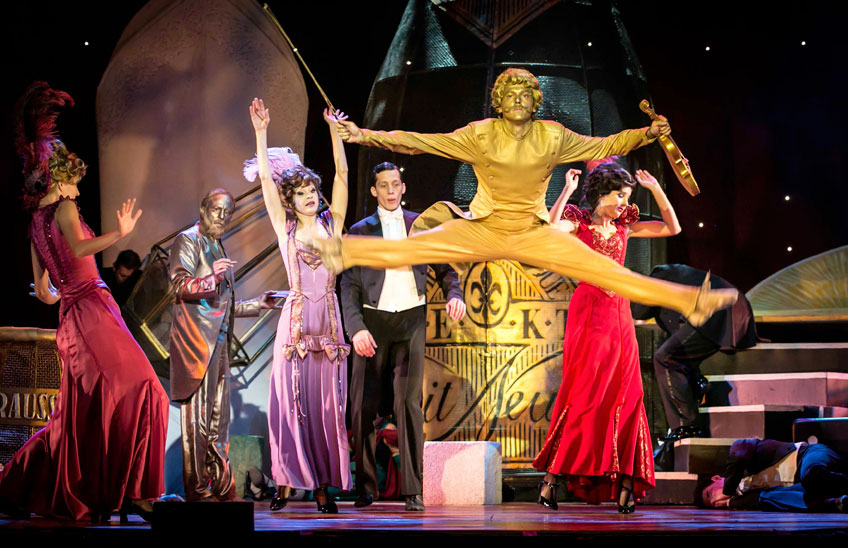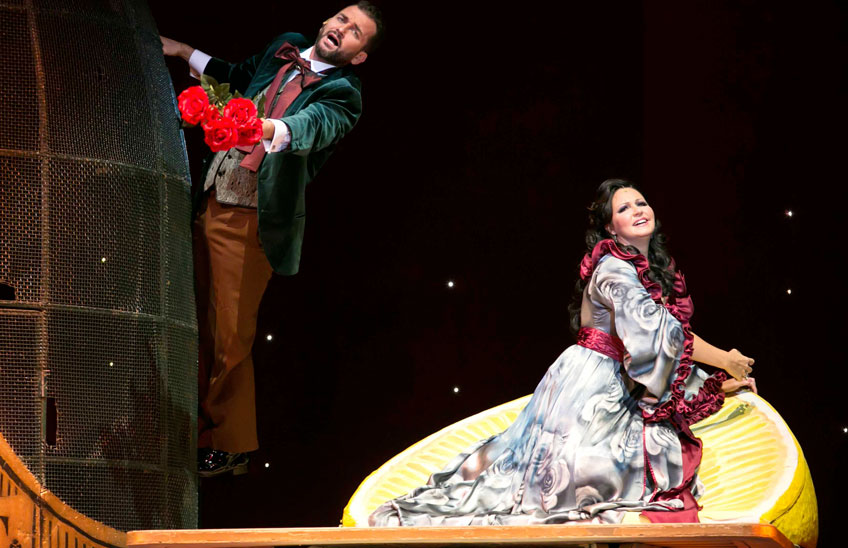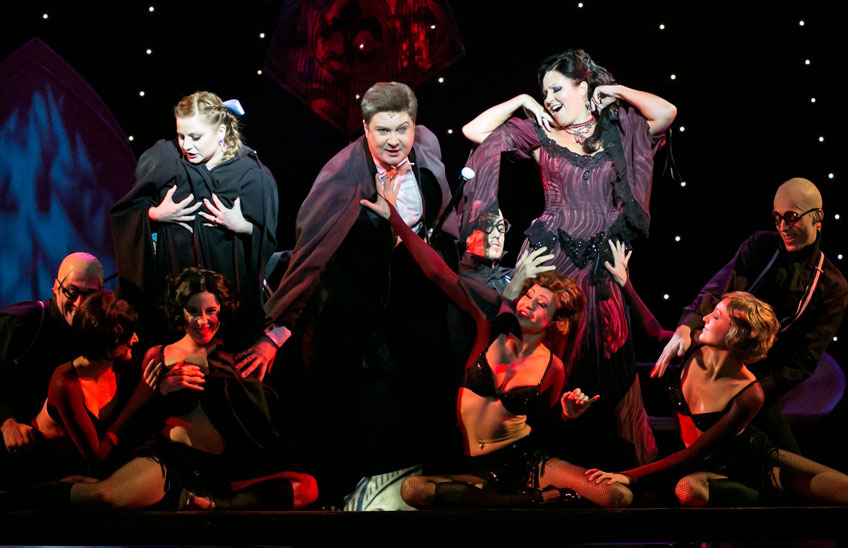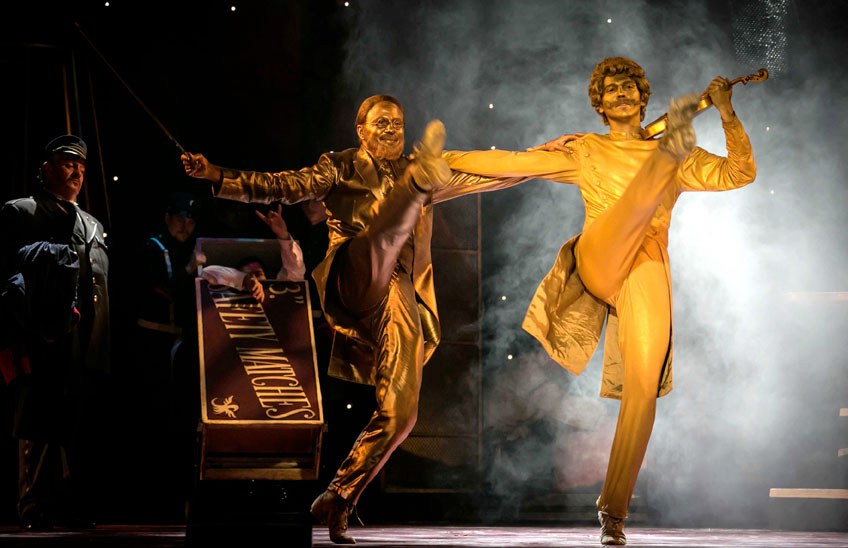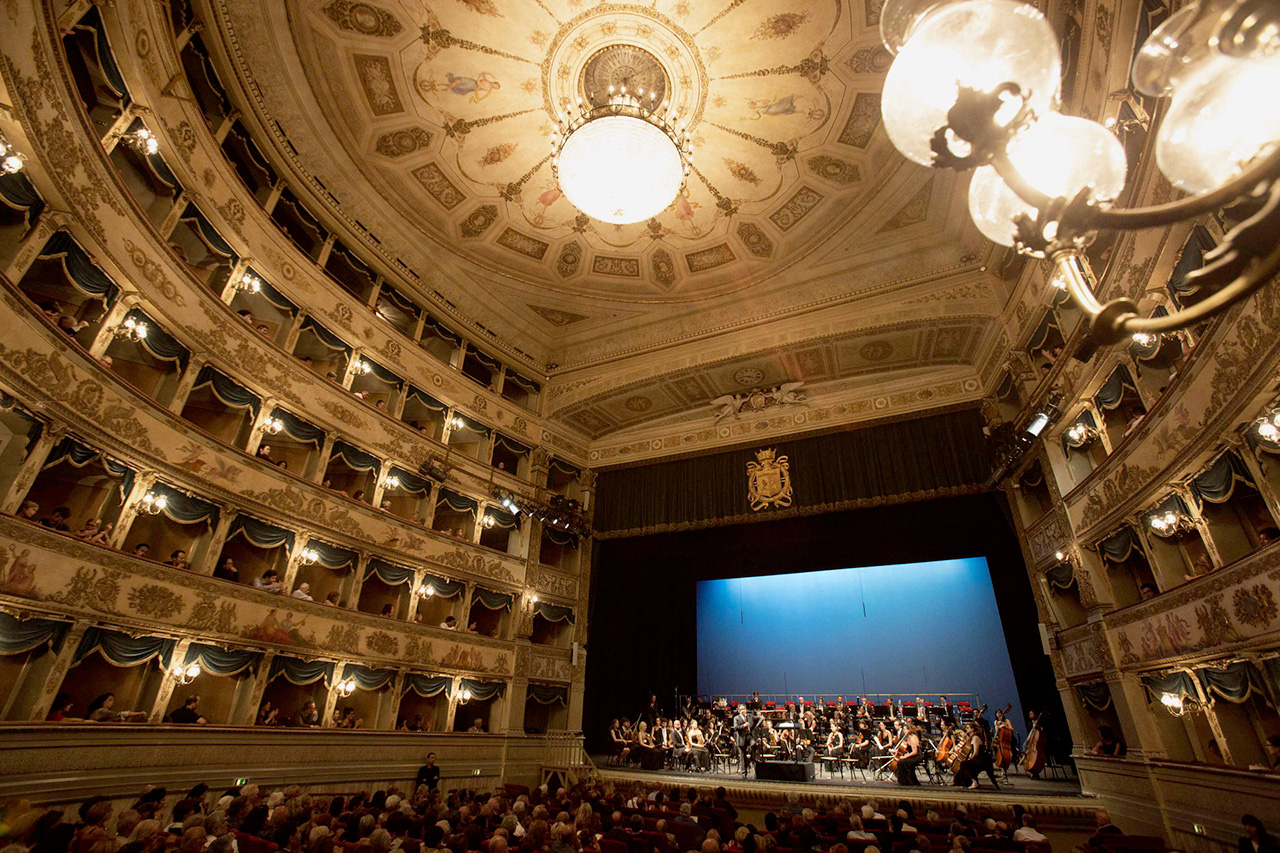Die Fledermaus (Il pipistrello)
musica di Johann Strauss
libretto di Karl Haffner e Richard Genée
adattamento scenico György Böhm
direttore d’orchestra Dániel Somogyi Tóth
regia Kero (Miklos Gàbor Kerènyi)
scene Csörsz Khell
costumi Tünde Kemenesi
coreografie Jenő Lőcsei
Orchestra Filarmonica Kodály di Debrecen
Coro del Teatro Csokonai
maestro del coro Péter Drucker
Corpo di Ballo del Teatro dell’Operetta di Budapest
co-produzione Teatro Operetta di Budapest, Teatro Csokonai di Debrecen e Operettissima
in collaborazione con Studiomusica Hungary
In Austro-Hungarian Vienna, the capital of a multi-ethnic, multinational empire in its twilight years, where the Danube was a most important transport route, the three titles of the Danubian Trilogy were staged at the Theater an der Wien within fifty years. While Strauss, who transplanted the light waltz of the 19th-century bourgeoisie into Offenbach’s harshly satirical tradition, is regarded as the inventor of the Viennese operetta, Lehár’s Merry Widow was an extraordinary and unexpected success in the Vienna of Freud, Mahler, Schnitzler and Schönberg. Almost 20 years later, Hungarian composer Kálmán closed the loop by innervating this popular form of musical theatre with Gypsy and Magyar elements: his Countess Maritza deliberately plays footsie with an operetta by Strauss, also on a Gypsy theme.
